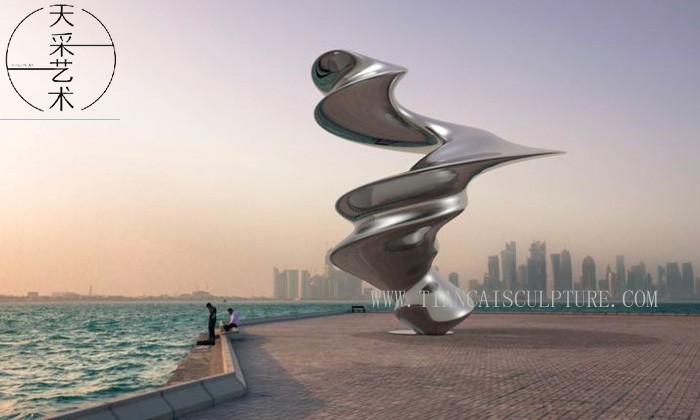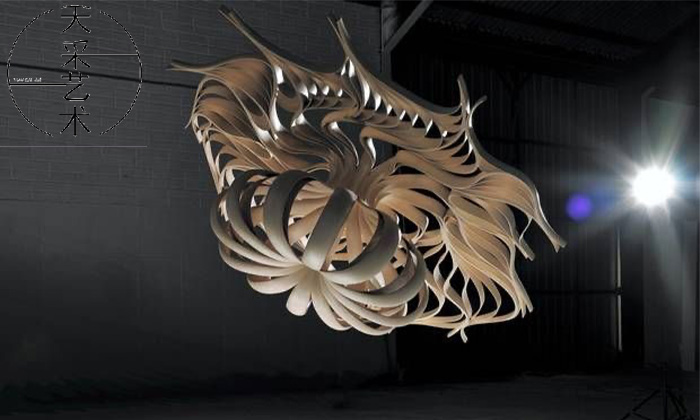 Sep 05, 2024
Sep 05, 2024
近年、私たちはカスタムスカルプチャーの専門工場として、世界規模での金属彫刻アートの隆盛な発展を見守り、携わってきました。現代アートの継続的な革新により、 金属彫刻 徐々に芸術的な力として高く評価され始めています。 米国の大胆で前衛的な抽象表現主義、機械的に傾斜した鋼鉄彫刻への愛、優雅で繊細なブロンズ作品を好むフランスのエレガントで魅力的な新しい芸術スタイル、さらにはルネッサンスの古典的で複雑な影響に至るまで。イタリアでは、さらには中国や日本の古代文化遺産が染み込んだ伝統的な要素、光沢のある魅惑的なステンレス彫刻に対する中国人の賞賛など、金属彫刻はその独特の魅力を示しており、文化の境界を超えた世界的な芸術言語となっています。それは世界中の芸術愛好家の間でますます共通の追求となりつつあります。 ステンレス鋼に加えて、当社の金属彫刻には錬鉄、銅、アルミニウムなどの素材も組み込まれています。それぞれの素材には独自の特徴と魅力があります。錬鉄は頑丈で重厚な工業的な美学を際立たせ、銅は暖かく神秘的な古典的な雰囲気を醸し出し、アルミニウムは軽くて現代的なファッション感覚を表します。このトレンドに乗って、当工場も引き続き金属彫刻の職人技を磨き、お客様により質の高いカスタムサービスを提供できるよう努めてまいります。 彫刻のカスタマイズを専門とする工場として、私たちはこの芸術形式が世界規模で繁栄する発展を個人的に目撃し、関与してきました。また、さまざまな国や地域の金属彫刻に対する美的嗜好を深く理解することで、常にものづくりの技術を磨き、より優れたカスタムサービスをお客様にご提供できるよう努めてまいります。 まず第一に、金属素材自体は本質的に強い視覚的インパクトを持っています。冷たく硬い鋼、温かみのある光沢のある銅やアルミニウム、まばゆいばかりのステンレスなど、それぞれの金属が彫刻作品に独特の魅力を与えます。精緻な加工技術により、金属彫刻はより多様な表面質感や視覚効果を発揮することもできます。 たとえば、 ステンレス製の彫刻 当社工場で生産される製品には、ブラッシング、溶接、研磨、鏡面仕上げなどの工程が含まれます。ミニマリストでエレガントなブラシ効果から、光沢のある研磨面、高度な技術による鏡面仕上げまで、それぞれの技術がアートワークに異なる特徴を与えることができ、顧客に幅広い選択肢を提供します。さらに、金属彫刻は、その彫刻言語において多用途性を備えています。流動的でエレガントな抽象的な形状から、生き生きとした鮮やかな写実的な表現まで、金属素材は幅広い表現を巧みに表現できます。これにより、アーティストは創造性を解き放ち、伝統的な彫刻の限界を継続的に押し広げることができます。 一部の大きな金属彫刻作品は、ステンレス鋼などの素材を使用して美しい抽象的な形を彫刻したり、本物のようなものを作り出したりします。 動物の彫刻 錬鉄を使用しており、そのどれもが金属彫刻の無限の可能性を示しています。 興味深いことに、金属彫刻に関しては、国や文化が異なると、独特の美的好みや創造的なスタイルが異なります。 具体的な例をいくつか示します。抽象表現主義: 米国は抽象表現主義のスタイルで有名で、アレキサンダー カルダーの移動彫刻などの作品に見られるように、金属彫刻は大胆な形、線、構造を体現することがよくあります。 ミニマリズム: ミニマリスト スタイルはアメリカの金属彫刻にも重要な位置を占めており、リチャード セラの作品に例証されるように、シンプルさ、幾何学的な形状、明確なラインが特徴です。 フランス:アール ヌーボー: フランスの金属彫刻はアール ヌーボー運動の特徴を示すことが多く、エミール ガレのブロンズ彫刻のように、エレガントなラインや花のモチーフが特徴です。 シュルレアリスム:フランスの金属彫刻もシュルレアリスムの影響を受けており、ソニア・ドロネーの金属彫刻作品に見られるように、超現実的な形と想像力を表現しています。 イタリア:ルネッサンスの影響: イタリアの金属彫刻はルネサンス時代の影響を受けており、ミケランジェロのブロンズ彫刻に見られるように、古典主義の特徴や複雑な彫刻技術が見られることがよくあります。 モダンなイタリアのデザイン: モダンなイタリアの金属彫刻は、ジョバンニ カルリによる現代的なステンレス鋼の彫刻など、シンプルでエレガントなデザインを強調しています。 中国:伝統的な中国のモチーフ: 中国の金属彫刻には、龍、鳳凰、その他の縁起の良い模様などの伝統的な文化要素が融合していることが多く、中国の伝統芸術の魅力を表しています。 現代中国美術: 現代中国の金属彫刻作品は多様で、現代性と抽象性を追求するものもあれば、民俗芸術の特徴や職人技に焦点を当てたものもあります。 日本:禅の美学:日本の金属彫刻は、松本幸三の鉄の作品に見られるように、シンプルでエレガントで、自然と静けさを強調し、禅の美学を体現していることがよくあります。 現代日本の彫刻:現代の日本の金属彫刻作品は多様で、伝統的な文化要素を組み合わせたものもあれば、前衛的なデザインと技術革新を追求したものもあります。 これらの例は、世界中のアーティストによる金属材料の創造的な使用と美的追求を反映して、さまざまな国の金属彫刻スタイルの多様性と独自性を示しています。 たとえば、米国では、金属彫刻はしばしば抽象表現主義とミニマリズムの特徴を示し、大胆な形状、線、構造を示します。一方、フランスの金属彫刻はアール ヌーボー運動とシュルレアリスムの要素を融合し、エレガントで想像力豊かなラインを示しています。 イタリアでは、金属彫刻はルネッサンス時代の影響を受けることが多く、古典的な特徴と絶妙な彫刻技術が体現されています。一方、現代のイタリアの金属彫刻は、ミニマリストでエレガントなデザイン美学を強調しています。 同時に、中国と日本の金属彫刻には、それぞれの長年にわたる伝統的な芸術的特徴が組み込まれています。中国の芸術作品には龍や鳳凰などの縁起の良いモチーフが組み込まれていることが多いですが、日本の作品は禅の美学のシンプルさと優雅さを体現しています。 この多様性に対するグローバルな視点は間違いなく、アーティストにより広い創造的空間を提供します。現代美術は分野を超えた統合をますます重視しており、さまざまな国のクライアントが伝統的な素材の好みを打破し、より革新的で画期的な彫刻形式を求め始めていることが観察されています。 例えば、銅とステンレスを巧みに組み合わせたり、アルミニウムを使って独特の抽象的なフォルムを作り出したりすることで、金属彫刻の表現範囲が豊かになります。 全体として、金属彫刻は文化の境界を超えた普遍的な芸術言語になりつつあり、世界中の芸術愛好家の間で広く共感を呼んでいます。私たちは、この分野の専門工場として、これからもクラフトマンシップを守り、技術力を高め、お客様のより優れたカスタムピースを作り、世界規模でのこの芸術の発展に貢献してまいります。私たちは、さまざまな素材の彫刻作品のカスタマイズを専門とする中国の彫刻工場です。私たちのウェブサイト: www.tiancaisculpture.com お問い合わせ ご希望の彫刻を注文するには

